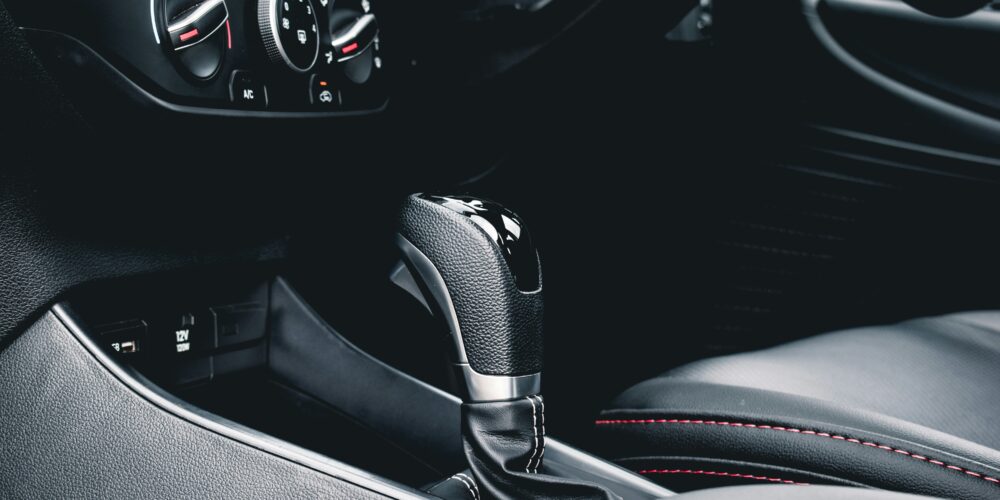As we all know, the gearbox, or transmission, is a critical component of your vehicle’s drivetrain. Like any mechanical part, gearboxes have a finite lifespan and understanding when they might need to be replaced can save you from unexpected breakdowns and costly repairs. In this article, we’ll explore the factors that influence the lifespan of a gearbox, signs that it may be nearing the end of its life and when you should consider a gearbox replacement.
What Determines the Lifespan of a Gearbox?
The lifespan of a gearbox can vary widely depending on several factors. Everything from the type of gearbox your vehicle has, to your driving habits and maintenance routine can all affect how long your gearbox lasts. Typically, the following can affect its overall lifespan:
- Type of Gearbox: Manual gearboxes typically have a longer lifespan compared to automatic or semi-automatic transmissions, as they have fewer components and less electronic complexity.
- Driving Habits: Aggressive driving, frequent towing, and constant stop-and-go traffic can put extra strain on the gearbox, shortening its lifespan.
- Maintenance Routine: Regular maintenance, including timely fluid changes and inspections, can significantly extend the life of a gearbox.
- Vehicle Make and Model: Some vehicles are equipped with gearboxes designed for durability, while others may have components more prone to wear and tear.
- Operating Conditions: Extreme temperatures, heavy loads, and harsh driving environments can accelerate gearbox wear.
Under normal conditions and with proper care, a gearbox can last anywhere from 100,000 to 150,000 miles or even longer. However, this is a general estimate, and the actual lifespan can vary. You can check your manufacturers recommendations, or speak to our team for advice if you’re unsure.
Signs Your Gearbox May Be Failing
Recognising the signs of a failing gearbox can help you address problems before they lead to complete failure. Some common symptoms include:
- Unusual Noises: Grinding, whining, or clunking noises when shifting gears are often early indicators of internal gearbox issues.
- Difficulty Shifting Gears: If you notice hesitation, hard shifts, or a complete inability to change gears, this could signal significant wear or damage.
- Fluid Leaks: Gearbox fluid leaks can cause inadequate lubrication, leading to overheating and accelerated wear.
- Vibrations or Shuddering: Excessive vibrations or a shuddering sensation when driving can indicate that the gearbox is struggling to operate smoothly.
- Burning Smell: A burning smell, particularly from the transmission fluid, may suggest overheating, often due to worn-out components or insufficient lubrication.
If you notice any of these signs, it’s important to have your vehicle inspected by a professional as soon as possible.
When Should You Consider Replacing Your Gearbox?
Deciding when to replace a gearbox is not always straightforward. In some cases, a complete rebuild might suffice to get your vehicle back into working order, or a simple repair might be needed. Diagnostics can help determine this. However, here are some key considerations:
- Cost of Repairs vs. Replacement: If the cost of repairing a faulty gearbox is approaching or exceeding the value of a replacement, it may be more economical to opt for a new or reconditioned gearbox.
- Vehicle Age and Mileage: For older vehicles with high mileage, investing in a new gearbox might not be worthwhile, especially if other major components are also nearing the end of their lifespan.
- Frequency of Repairs: If your gearbox has required frequent repairs or is experiencing recurring issues, it may be time to consider a replacement rather than continuing to pour money into temporary fixes.
- Overall Vehicle Condition: Assess the overall condition of your vehicle. If the gearbox is one of many ageing components, replacing the entire vehicle might be a more practical solution.
- Availability of Parts: For some older or less common vehicles, finding replacement parts can be difficult and expensive, making a full gearbox replacement the more viable option.
Extending the Lifespan of Your Gearbox
While replacement is sometimes inevitable, there are steps you can take to extend the life of your gearbox:
- Regular Maintenance: Follow your vehicle manufacturer’s recommendations for gearbox fluid changes and inspections. Keeping the fluid clean and at the right level is crucial for lubrication and cooling.
- Gentle Driving: Avoid aggressive acceleration and hard gear shifts. Driving smoothly reduces strain on the gearbox and other drivetrain components.
- Monitor Warning Signs: Pay attention to any unusual noises, smells, or performance issues, and address them promptly to prevent further damage.
- Avoid Overloading: Heavy loads can put excessive stress on the gearbox, especially in vehicles not designed for towing or carrying extra weight.
Understanding the lifespan of your gearbox and recognizing when it might be time for a replacement can help you avoid unexpected breakdowns and costly repairs. By paying attention to the signs of wear, maintaining your vehicle properly, and considering your options carefully, you can make informed decisions about when to replace your gearbox.
If you’re experiencing any issues with your gearbox or are concerned about its condition, it’s always best to consult with a trusted mechanic. Our team are on hand to help you with diagnostics, repairs and replacements where needed, including reconditioning following any work. Simply get in touch with us, today.

